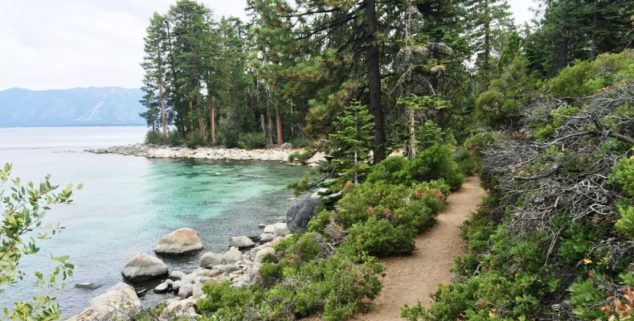Opinion
Parks are a public health solution waiting on our doorstep
 A section of the Rubicon Trail at D.L. Bliss State Park in South Lake Tahoe. (Photo: AJ9, via Shutterstock)
A section of the Rubicon Trail at D.L. Bliss State Park in South Lake Tahoe. (Photo: AJ9, via Shutterstock)It’s time to shift the conversation around parks in California. New data is illuminating the need to look at state parks in communities a bit differently. Rather than measuring their value by their undeniable beauty, new research illustrates a clear opportunity to measure parks by their impact on our public health and communities.
It is our obligation to begin looking at California’s forests, coastlines and parklands in terms of what they can do for our underserved neighborhoods and youth who live within arm’s reach, but lack pathways to experience the health and wellness benefits they provide.
New data shows more than half of Californians under 18 and 60 percent of the state’s severely disadvantaged households live within close range of a state park.
Mounting research clearly proves the outdoors are a source of innumerable health and wellness benefits for all Californians. As referenced in UCLA’s new report, a study of California children showed living within 500 meters of a park was associated with gaining significantly less body mass by age 18, making them less likely to develop health problems down the line. Another study surveyed 80,000 California households and found living near a green space significantly lowered levels of distress, regardless of socioeconomic status.
But today, physical and mental health concerns are increasing for all Californians, and the problems are worse in low-income communities, especially for youth. Nearly 1.5 million children in California have asthma, the most prevalent chronic condition for kids ages 0 to 17. Between 13 and 20 percent of American children are experiencing mental health disorders in any given year. Research shows that traumatic events in childhood can increase the risk of cancer, heart disease, diabetes and depression.
With new data showing more than half of Californians under 18 and 60 percent of the state’s severely disadvantaged households live within close range of a state park, it’s clear that our parks are a tremendous and potentially underutilized resource to promote youth health.
This valuable data provides crucial insights on ways we can leverage the state parks system to act as a public health solution. Through first-of-its-kind demographical analysis of Californians living near a state park, we discovered 57 percent of all Californians live within the vistorshed – a walkable, drivable or bikeable distance – of a state park. The visitorshed of all 280 state parks represents:
–54 percent of the state’s youth population
–3 million disadvantaged households
–60 percent of the state’s severely disadvantaged households
–1 million youth living below the poverty line
These important findings cement our belief that we must act now. As the state continues to grapple with growing health concerns, it is imperative to look at opportunities to invest in solutions right at our fingertips. We must push policies to increase outdoor experiences and improve health outcomes, especially for our underserved youth.
Currently, two bills await the Governor’s action. AB 209 (Limón) and AB 556 (Carrillo) work to remove barriers to outdoor access for the underserved and youth populations. We urge the Governor’s support of both bills as an important step in the right direction.
But the reality is there is much more to do to create a California for all that includes parks for all. With new tools available, let’s work make access to parks a fundamental right for every Californian.
Editor’s Note: Jon Christensen is an adjunct assistant professor at UCLA’s Institute of the Environment and Sustainability and a founder of the Laboratory for Environmental Narrative Strategies. Rachel Norton is executive director of the California State Parks Foundation, a nonprofit group dedicated to protecting and preserving the California state parks system.
Want to see more stories like this? Sign up for The Roundup, the free daily newsletter about California politics from the editors of Capitol Weekly. Stay up to date on the news you need to know.
Sign up below, then look for a confirmation email in your inbox.

Leave a Reply